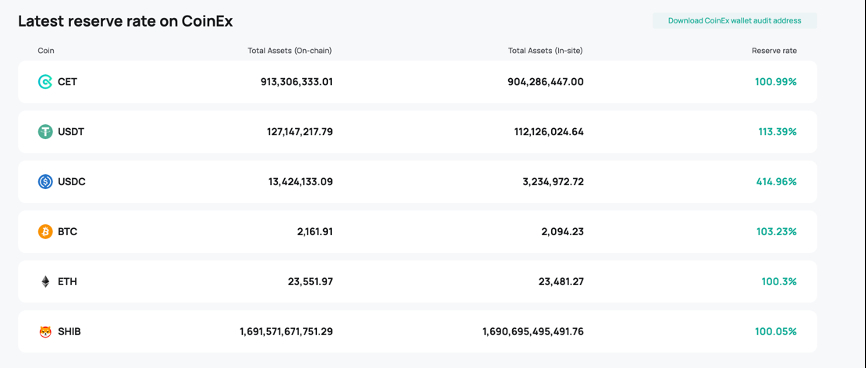The Crypto Trend Behind Exchanges
Disclaimer: The text below is an advertorial article that is not part of Cryptonews.com editorial content.
2022 was a major challenge for crypto exchanges. As Warren Buffett put it, only when the tide goes out do you discover who’s been swimming naked. In a volatile market, FTX, an exchange worth billions of dollars, was instantly eliminated from the market, let alone middle and small-sized exchanges. Many investors couldn’t even get back their assets stored on exchanges. Meanwhile, the crypto community has been discussing how to make centralized exchanges more regulated and transparent.
Regulators release signals of stringent regulation
Following the FTX collapse, more traditional financial regulators put crypto on their radar screen. Fed vice chairman, SEC chairman, U.S. Treasury Secretary, the deputy governor of the Bank of England, and the International Monetary Fund have all proposed to impose effective regulatory oversight on crypto; the market should conform to the same rules as the traditional financial industry to mitigate risks.
Of the crypto exchanges out there, Coinbase is the biggest supporter of strong regulatory oversight. Coinbase CEO Brian Armstrong stated that the crypto regulations discussed by lawmakers worldwide will help them defeat competitors. Moreover, the exchange also published Regulating Crypto: How we move forward as an industry from here in December 2022, which describes how the industry can be regulated in terms of stablecoins, trading platforms, and custodians.
Regulatory intervention in crypto is clearly inevitable after the fall of FTX. That being said, in 2022, privacy protocol Tornado Cash suffered OFAC sanction and led to resistance to regulations in the crypto community. After all, sanctions are not what we want to see in a market that strives for decentralization. Furthermore, before its downfall, FTX also embraced regulation, but it turned out that it was merely a posture that allowed the exchange to seek publicity and crush competition.
Based on the attitudes of the major exchanges, we can tell that crypto regulations will become more stringent in certain countries, but many are not convinced by their validity. In conventional finance, it is common that big corporations go bankrupt, and strict regulations will not eliminate all the risks. Meanwhile, what happened to Tornado Cash is always a reminder that regulations are accompanied by sanctions. Once regulators start to intervene with strict measures, many innovative decentralized applications will be strangled in their cradle, and some investors might not have access to the market due to regulatory oversight.
The industry is pursuing full transparency
After the crisis of trust due to the FTX collapse, exchanges have published the Merkle tree and addresses of their reserve proof. For instance, top trading platforms such as Binance, OKX, Crypto.com, Huobi, and CoinEx disclosed their reserve proofs soon after the fall of FTX.
According to the wallet addresses and user assets they disclosed, these exchanges have managed to achieve a 100% reserve coverage of user assets, and some exchanges own reserve funds that far exceed user assets. For example, the USDC reserve rates of Binance and CoinEx are both over 400%.

Many people argue that having a 100% reserve rate is great because it makes sure that users are always able to withdraw their cryptos. Although that statement is not 100% accurate, given the current market conditions, reserve proofs are the best way to make crypto exchanges more transparent. Moreover, the reserve assets of an exchange are also indicative of the operation of a platform.
For example, we all know that stablecoins have to process massive withdrawal requests when there is a run, which means that the proportion of stablecoins in a platform’s reserve assets could roughly tell us the risk resistance capacity of different platforms under extreme scenarios. As can be seen from the table below, on Binance and CoinEx, the proportion of stablecoins in reserve assets is above 50%, meaning that stablecoin withdrawals can always be processed. It should be noted, however, 52% of Binance’s stablecoin reserves are BUSD, a coin issued by the exchange itself. Although BUSD obtained the relevant approvals for issuance, some still worry about whether it could be withdrawn if Binance were to crash. Therefore, investors must assess the risks on their own before choosing an exchange.

According to the stated attitude of crypto exchanges, most platforms prefer to earn user trust through high transparency. Though some crypto players argue that reserve assets are not ironclad evidence of a platform’s security, compared to stringent regulation, reserve proofs are obviously more popular with users. In addition, as time goes by, the technologies of reserve proofs will also advance in response to market demands.
After the FTX collapse, the crypto industry shifted its focus to security and transparency, which will bring new development trends. Meanwhile, centralized exchanges will become more transparent while facilitating transactions, and the decentralized management of assets on centralized platforms might even gain traction. As such, investors still need to look for long-established technology-driven platforms. A good example is CoinEx as mentioned above. Backed by a proven 100% reserve rate and sufficient reserve assets, CoinEx offers solid guarantees in terms of both asset and technology.
Credit: Source link


 Bitcoin
Bitcoin  Ethereum
Ethereum  Tether
Tether  XRP
XRP  Solana
Solana  Dogecoin
Dogecoin  USDC
USDC  Cardano
Cardano  Lido Staked Ether
Lido Staked Ether  TRON
TRON  Avalanche
Avalanche  Wrapped stETH
Wrapped stETH  Sui
Sui  Toncoin
Toncoin  Chainlink
Chainlink  Shiba Inu
Shiba Inu  Wrapped Bitcoin
Wrapped Bitcoin  Stellar
Stellar  Hedera
Hedera  Polkadot
Polkadot  WETH
WETH  Bitcoin Cash
Bitcoin Cash  LEO Token
LEO Token  Litecoin
Litecoin  Uniswap
Uniswap  Pepe
Pepe  Hyperliquid
Hyperliquid  Wrapped eETH
Wrapped eETH  NEAR Protocol
NEAR Protocol  Ethena USDe
Ethena USDe  USDS
USDS  Internet Computer
Internet Computer  Aptos
Aptos  Aave
Aave  Mantle
Mantle  POL (ex-MATIC)
POL (ex-MATIC)  Cronos
Cronos  Ethereum Classic
Ethereum Classic  Render
Render  Bittensor
Bittensor  MANTRA
MANTRA  Monero
Monero  Tokenize Xchange
Tokenize Xchange  Artificial Superintelligence Alliance
Artificial Superintelligence Alliance  Dai
Dai  Virtuals Protocol
Virtuals Protocol  Arbitrum
Arbitrum
Comments are closed.